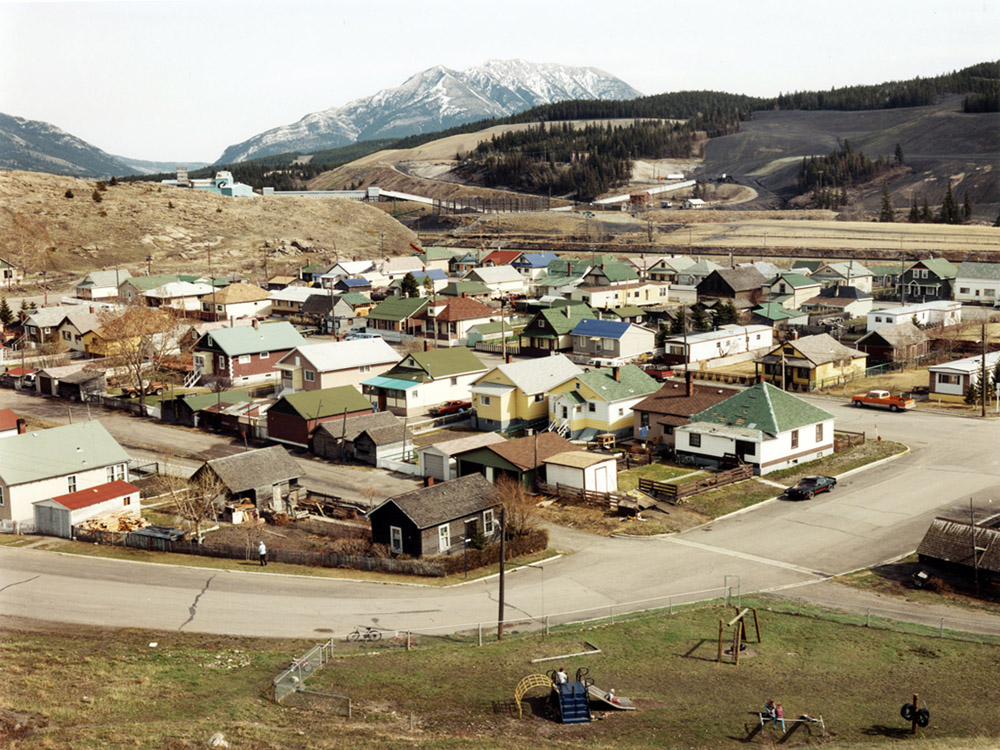EDWARD BURTYNSKY’S HOMESTEADS #27

Burtynsky is a documenter of the Anthropocene Era. The Anthropocene is a proposed term for our current geological era that has gained popularity in the last two decades. It posits that human industry has become the defining influence on the earth’s surface. Burtynsky and his work became widely known from the film documentary Manufactured Landscapes (2006) in which he captured the effects of the building of the Three Gorges Dam in China.
Homesteads #27, Coleman, Crowsnest Pass, Alberta is a large Chromogenic colour print that was taken with a large format film camera. It is remarkable for its sharp-focused detail that extends throughout the entire print. It is a slightly overcast, early spring day in Coleman, Alberta. Built by the International Coal and Coke Company in 1904, Coleman is a company town. With our reliance on extracting natural resources, Canada is dotted with towns like Coleman. Burtynsky has an eye for capturing the sublime. In this work we see the banality of back laneways offset with the spectacular setting of the Crowsnest Pass of the Rocky Mountains.
Like much of Burtynsky’s work, the camera is elevated above the scene it captures. This “bird’s eye view” gives the viewer the literal big picture. In the foreground is a playground and a neighbourhood of modest homes seen from above. After the homes we see the rail lines, coal mine, and tailings piles of Coleman’s main industry. At the top of the picture, Turtle Mountain majestically looms large over the entire scene.
Homesteaders, the title of the photographic series this work is part of, guides our reading. We are looking at mountains formed over of the aeons of geological time. Beneath them lies the coal that drew the people here so relatively recently. In the foreground, on a small, level patch of valley floor, the homes of the workers and their families are huddled tightly together in a small, gridded neighbourhood. The homes all look different including the several mobile homes. Each home was built individually, unlike suburban developments of cookie cutter houses. The small park with children on playground equipment indicates there are families with an ongoing commitment to their community. Coleman may have begun as a mining camp, but it evolved into a town.
Burtynsky’s framing of the scene forces us to think about the past, present, and future of the community. A vital company town can suddenly become a ghost town if demand for a commodity drops. The changes to the landscape will remain long after the people have gone. For Burtynsky, landscapes are not fixed. His photos capture visually stunning moments amidst the flux of physical change humans make in the world.

